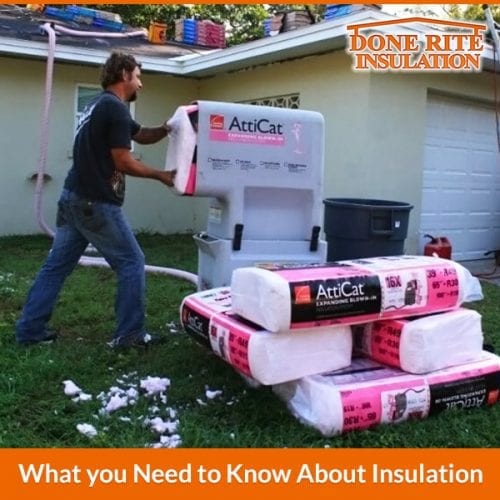 Insulation isn’t something you can simply go out and buy without some foreknowledge on the topic. This is because it’s more complex than its simple pink color would initially lead you to believe. While it’s not rocket science, there are some things that you do need to know.
Insulation isn’t something you can simply go out and buy without some foreknowledge on the topic. This is because it’s more complex than its simple pink color would initially lead you to believe. While it’s not rocket science, there are some things that you do need to know.
Understanding the Different Types
There are many different types of insulation available because they’re all made in different ways, including:
- Cellulose is only transformed into loose-fill material. This is made from paper and has flame retardants added to it.
- Fiberglass is made from inorganic materials like molten sand and recycled glass. Under highly controlled conditions these substances are transformed into batt, blanket, and loose-fill materials.
- Foam is available either as a rigid board or a material that can fill and seal spaces within a building’s cavities, gaps, cracks, or other openings.
- Rock and slag wool are made in a way that’s like fiberglass. The difference is they use natural rock and slag from blast furnaces. They’re transformed into blanket, board, and loose-fill types.
All these types of fabrication have two additional parts they share in common. These are:
- Reflective materials made from aluminum foil and either a polyethylene bubble or plastic film on its backing. These help with transferring heat and are given an R-value (more about that in a moment.
- Radiant barriers bounded with an open-air space to limit the amount of heat that’s transferred via radiation.
Introducing R-Value
As we previously mentioned, all the reflective materials that are used in the various types of insulation have an R-value (a.k.a. thermal resistance) that’s assigned to it by the American Society of Testing and Materials (ATSM). This is a measure of how resistant it is when it comes to the flow of heat, which means that the higher its R-value is, the better it’s able to insulate your home. With this in mind, you should know that any material that has the same R-value will offer the same amount of power when it comes to insulating your home. It doesn’t matter what type you choose or its thickness or weight. This is because the R-value is determined by the type of material, as well as the material’s thickness and how much of it is used per square foot instead of basing this on thickness alone. Once you understand this you’ll be better able to understand how insulating your home will keep it cooler in the summer and warmer in the winter.
Knowing how Much you Need
The best way to save money in your home is by making sure you have enough insulation in place. One of the main places you should check for this is your attic to make sure it comes above the top of the joists there. Additionally, if you know your home was built before 1980 you can be pretty sure it doesn’t have enough insulation. In fact, newly constructed homes have a set amount they must have within your ceiling, wall, floor, and basement to be “up to code” or pass inspection.
Clearly there’s a lot that you should know about this topic. If you feel that you’re in over your head or don’t have enough time to spend thoroughly learning about it, you can feel safe leaving the job up to Done Rite Insulation. Over the years they’ve helped many people with their home, you should trust them with yours too.









